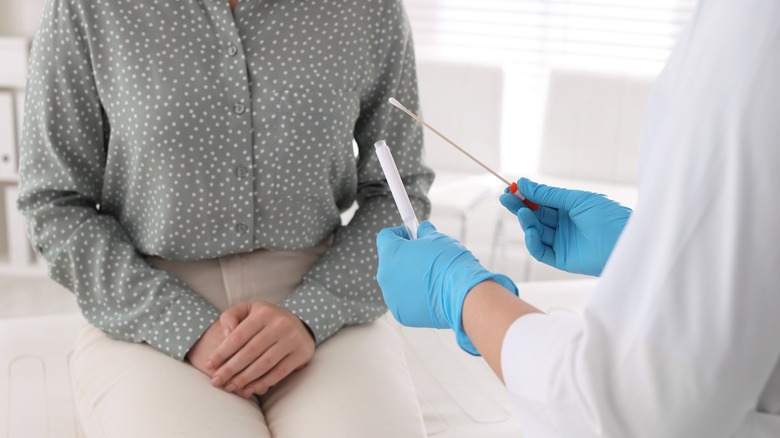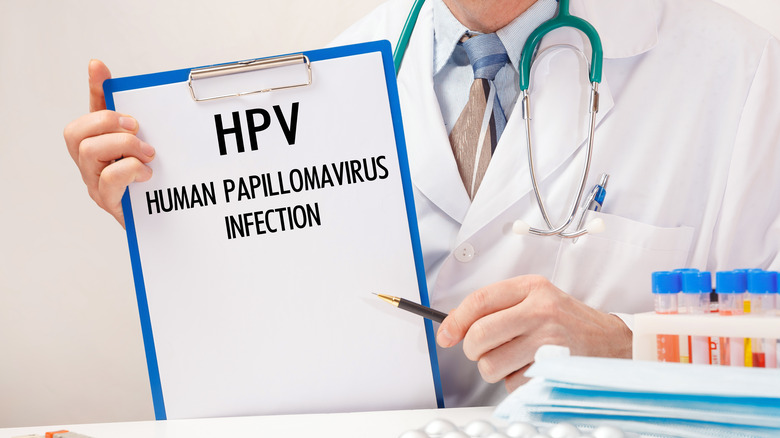What Is The Most Common STD?
Sexual transmitted diseases (STDs) are infectious diseases that are spread from person to person through sexual contact. They can be caused by bacteria, a virus, or even parasites. According to Cleveland Clinic, STDs can be transmitted through any type of sexual activity, including any contact involving the mouth, vagina, penis, or anus. They are usually passed on through bodily fluids during sexual activity, but some diseases can be transmitted through infected blood. STDs can cause painful and uncomfortable symptoms.
While anyone can get an STD at any time, people who are most at risk are those who share needles, have unprotected sex, have sex with multiple partners, or have sex with someone who has an STD (per Cleveland Clinic). Not everyone who has an STD will be symptomatic, but some common and generic symptoms include skin rash, jaundice, painful urination, bumps or sores on the genitals, vaginal or penile discharge, and swelling, itching, or redness near the penis or vagina. Since STDs are serious illnesses, they require treatment and a proper diagnosis. That's why it's important to get tested regularly and talk to your doctor if you have any of these symptoms.
HPV is the most common STD
There are millions of cases of different STDs that are reported every year, but the most common STD in the U.S. is human papillomavirus (HPV). According to Healthline, more than 79 million Americans have some form of HPV, many of whom are teenagers and young adults. While most cases of HPV are asymptomatic and don't have any impact on your health, some cases can lead to cervical cancer or other types of genital cancers, if left untreated. However, not all cases of HPV will cause cancer.
The most common symptom of HPV are warts (per Healthline). There are four types of warts you can get from HPV: common, genital, plantar, and flat. Common warts are coarse and elevated bumps that typically appear on the arms and hands. Genital warts are small bumps or lesions that develop on the genitals. Plantar warts are small, textured bumps that show up on the bottom of the feet. And flat warts are soft lesions that can pop up anywhere on the body.
Although there is no cure for HPV, it can be treated with prescription medications and outpatient procedures. It also can be prevented through vaccination. If your case of HPV is cancerous, however, you may require chemotherapy, radiation therapy, or surgery.


